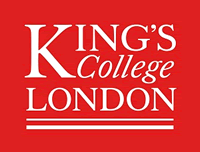There are increasing numbers of procedures in which electrodes are placed at depth in the human brain – both for recording and stimulation. While implanted electrode recordings are used in epilepsy treatment, DBS is an established therapy for neurological conditions and movement disorders. As an initial phase of a research program, this project focuses on the DBS devices.
The goal of this project is to develop novel RF-coil-array enabling safe and high-quality imaging of adults and children with implanted neurostimulation devices. This project will enable constraint-free MRI on patients with implanted devices without the need to modify the current devices. Ultimately this will make MRI more widely available to adults or children with implanted neurostimulation devices, reducing the overall population risk of radiation from computer tomography (CT), and additionally enabling future studies of the interaction between the implanted devices and the patient’s brain using functional MRI.
Project description
The project will address key needs for paediatric neurostimulator placement and planning by deploying a common core of electromagnetic-simulation and RF design. First, it seeks to explore systematic safety solutions for electrode placement under real time MRI guidance using the emerging platform technology approach of parallel transmission (pTx). It has recently been shown that pTx can make MRI systematically safe without the need to compromise performance by actively minimal currents flow on any wire present1. The proposed research, divided into three objectives, will have a profound impact on MRI engineering and clinical MRI research on patients with implants.
Objective 1, exploring optimal coil design: We will simulate the effect of an MR-conditional bilateral-DBS device. Using virtual human body models and the Finite-Difference Time-Domain (FDTD) electromagnetic field simulation method, we will investigate a 32-channel transmit-head-coil-array at 3T MRI. The aim with the design of the coil array is to achieve specific absorption rate (SAR) reduction at the tip of the electrodes in the tissue while reaching artefact-free imaging quality by recovering the RF and susceptibility artefacts due to the presence of implanted conductive DBS device. Another challenge will be to achieve RF decoupling between the array elements. Distinct coil profiles will be optimized for altering the coil geometry, circuitry and loading.
Objective 2, manufacturing the DBS-compatible RF coil prototype: Based on the optimal parameters of the RF coil array derived from the FDTD simulations in Objective 1, 32-channel pTx-RF-coil array will be built to experimentally test the proposed concept, which enables a detection of induced current as local enhancement of the RF field typically at the tip of the implant with distinct high sensitivity patterns. Each detected distinct sensitivity pattern will be used to calculate the optimized amplitude and phase combinations of the RF signal to mitigate RF field enhancement, and then these calculated amplitude/phase parameters will be fed into the MR scanner via pTx RF pulse design delivered by the 32-channel transmit array to the patient to form MRI signal.
Objective 3, validation with temperature measurements on phantoms in MRI: The RF safety assessment will be performed according to a prescribed format in ISO/TS 10974 in combination with FDTD and thermal simulations.
How to apply
Please submit an application for the Biomedical Engineering and Imaging Science Research MPhil/PhD (Full-time) programme using the King’s Apply system
Please include the following with your application:
- A PDF copy of your CV should be uploaded to the Employment History section.
- A PDF copy of your personal statement using this template should be uploaded to the Supporting statement section.
- Funding information: Please choose Option 5 “I am applying for a funding award or scholarship administered by King’s College London” and under “Award Scheme Code or Name”enter BMEIS_DTP.Failing to include this code might result in you not being considered for this funding scheme.
Application closing date
5 July 2021 (Applications may close early if a suitable candidate is found)
Contact information for enquiries
[Email Address Removed]

 Continue with Facebook
Continue with Facebook



